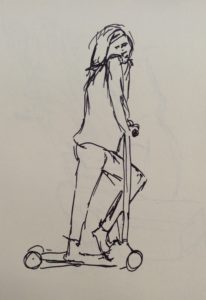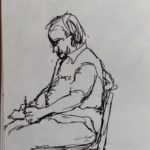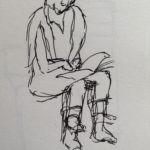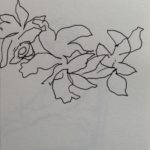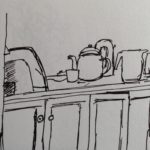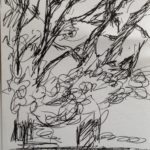Over the past few days I have been painting a scene from the “Meadow” near my home. I have made several small watercolour sketches :
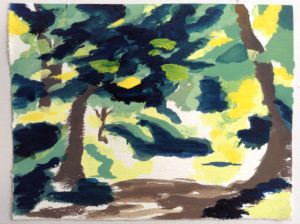
However, today’s effort was disastrous – the paint was too thick from the start and I tried mixing greens as my green paints were running low. I then tried to put things right but made them worse. The result may not look that bad on here – or that different from the rest – but it is when you actually see it.
I’d had some bad news earlier and was not in the best of moods for painting so I decided to cut my losses……..
Instead I did some research and trundled down to the Meadow with my i-pad and wellies . The nettles and other greenery along the stream are very high at present – such a contrast to the winter months. I got well stung! However, I enjoy wading rather than using the path and it took my mind to other places. I’m afraid I can’t sketch when I’m trying to balance on slippery mud…….but I took a lot of photographs.
In some places the river had just dried up and come to an end. I had to get back on the bank and walk along to trace it’s course, because clearly the water was flowing through somehow.
The Friends of Meadowside had a clean-up day recently so there was not very much rubbish lying about I’m happy to say. There were a lot of patterns to be seen – the dappling sunlight; the cracking earth in the dried up river bed; the patterns made by tree roots; especially when the earth around them is eroded; and many more.
Another visit soon I think.

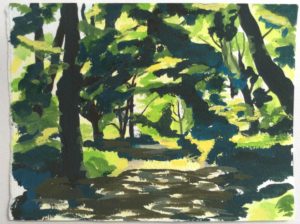

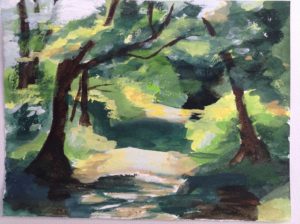




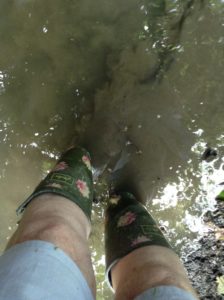




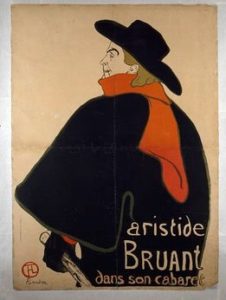 Montmartre. This compelling dramatic work was remarkable for its radical design. Lautrec has reduced his portrait of Bruant almost to abstract forms, with a limited palette of four colours, beginning with a keystone in olive green, then adding black, red and brown. The emphasis is on line and form, creating volume without shading, accentuated by the adoption of flat colours. The image is dominated by Bruant’s signature black cloak and hat, with the incredible slash of the bright red scarf that falls over his shoulder, as he holds the cane that completed his theatrical persona.
Montmartre. This compelling dramatic work was remarkable for its radical design. Lautrec has reduced his portrait of Bruant almost to abstract forms, with a limited palette of four colours, beginning with a keystone in olive green, then adding black, red and brown. The emphasis is on line and form, creating volume without shading, accentuated by the adoption of flat colours. The image is dominated by Bruant’s signature black cloak and hat, with the incredible slash of the bright red scarf that falls over his shoulder, as he holds the cane that completed his theatrical persona.

